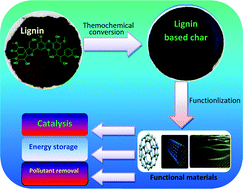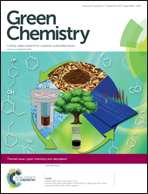Thermochemical conversion of lignin to functional materials: a review and future directions
Abstract
Lignin valorization is considered an important part of the modern biorefinery scheme. The unique structure and composition of lignin may offer many effective routes to produce several bulk chemicals and functional materials. Thermochemical conversion of lignin to synthesize value-added functional materials has recently attracted a lot of attention. In this review, we have presented currently available approaches and strategies for the thermochemical conversion of lignin to functional carbon materials. The transformation behavior and mechanism of lignin during the thermochemical process (e.g., pyrolysis and hydrothermal carbonization) are illuminated. The characteristics (structure and surface chemistry) of lignin-based functional carbon materials are summarized systematically. The advances in the functionalization of lignin-based carbon materials (surface functionality tuning and porosity tailoring) and the applications of lignin-based functional carbon materials in the fields of catalysis, energy storage, and pollutant removal are reviewed. Perspectives on how lignin-based functional materials would develop and, especially, in which fields the use of these functionalized materials could be expanded are discussed. This review clearly shows that a rational design of the functionalized lignin-based materials will lead to a rich family of hybrid functional carbon materials with various applications toward a green and sustainable future.

- This article is part of the themed collection: Lignin chemistry and valorisation

 Please wait while we load your content...
Please wait while we load your content...